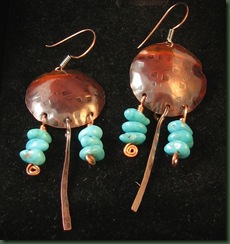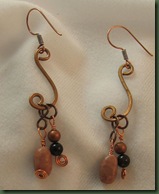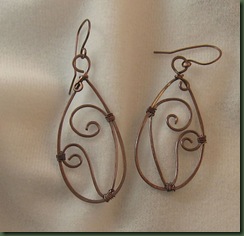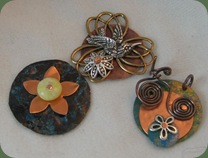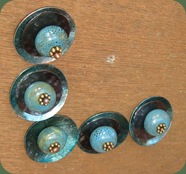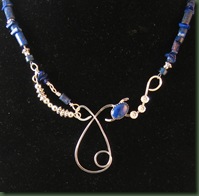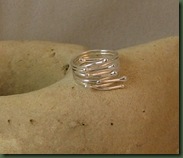
I’ve recently become intrigued with wrap style bracelets and the many variations thereof. They are quick and fairly easy to make and the cost of materials is usually quite nominal. I realize these have been around forever, but the resurgence of them within the broader market causes me to rethink their myriad of possibilities. For example, take a look on the Nordstrom’s website and search wrap bracelets. There you’ll find some rather expensive ones ($128 and up) that don’t look much different than those you see that I’ve made.
There are some good free online tutorials that show the process for wrap bracelets. For example, The following link takes you to the DIY tutorial for the bracelets pictured above: http://www.stumbleupon.com/su/1t8Exa/honestlywtf.com/diy/diy-wrap-bracelet/
These are made with leather, ball chain and waxed linen thread. They’re easy as pie.(not that making a pie from scratch is that easy . . . ) I started making them with the regular silver colored ball chain and then found a package of the colored chain at Hobby Lobby. My customers like the colored chain. I also made, but failed to get a picture before it left home, a bracelet with beads instead of the chain. I simply strung beads, crimping at both ends, and used them in the place of the chain. This is a bit trickier, but provides many color and texture choices. I also made one wherein I used colored cord from the fabric department from . . . you guessed it, Hobby Lobby, . . . in place of the chain.
The second tutorial is slightly more complicated, but still easy. I watched a video on the Auntie’s Beads site http://www.auntiesbeads.com/Wrap-Bracelets-Video_p_9111.html) and then made the turquoise and leather bracelet below. I used 6 lb. test Fireline (from the Walmart fishing department) to make my bracelet. This style provides many options for variation.
I made a bracelet that looks just about like the above, but used a different technique. I hand sewed the seed beads between the leather pieces, again using Fireline. The one below wraps around the wrist four times.
 Finally, I “borrowed” the idea for the braided bracelet from the Nordstrom’s website. They show a braided bracelet made with two pieces of leather, using the ball chain as the third braiding element. I didn’t have round leather and used multicolored cord. There’s really nothing novel about the braided version, but I had not thought of using chain it it before. You can just barely see the orange ball chain in the picture below but it’s there. Now I’m wondering about a plethora of other things that could be braided with the leather or cord. Any ideas?
Finally, I “borrowed” the idea for the braided bracelet from the Nordstrom’s website. They show a braided bracelet made with two pieces of leather, using the ball chain as the third braiding element. I didn’t have round leather and used multicolored cord. There’s really nothing novel about the braided version, but I had not thought of using chain it it before. You can just barely see the orange ball chain in the picture below but it’s there. Now I’m wondering about a plethora of other things that could be braided with the leather or cord. Any ideas?
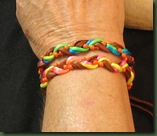 This may not be the kind of wrapping some of you were thinking about from the title. But I just can’t do the other RAP. If you can, go right ahead without me, but I’m sticking to this kind of wrapping and that’s a wrap for today.
This may not be the kind of wrapping some of you were thinking about from the title. But I just can’t do the other RAP. If you can, go right ahead without me, but I’m sticking to this kind of wrapping and that’s a wrap for today.


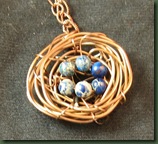
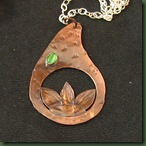
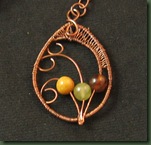 The third piece probably took the longest to make. It was quite tricky to get the three middle pieces of wire to all ball together in the torch. While you cannot see this very well, I can assure you it doesn’t look very ball-like. Yet, I wasn’t going to do it again! I think the wire weaving took the longest and I really do appreciate those of you who whip out these weaves with the greatest of ease. I’m making myself keep practicing and trying to learn to do this technique without gritting my teeth.
The third piece probably took the longest to make. It was quite tricky to get the three middle pieces of wire to all ball together in the torch. While you cannot see this very well, I can assure you it doesn’t look very ball-like. Yet, I wasn’t going to do it again! I think the wire weaving took the longest and I really do appreciate those of you who whip out these weaves with the greatest of ease. I’m making myself keep practicing and trying to learn to do this technique without gritting my teeth.